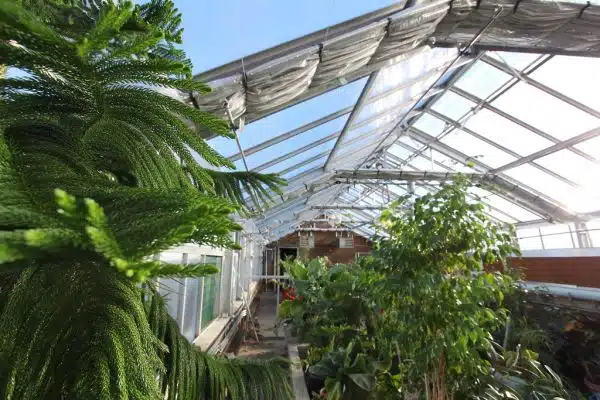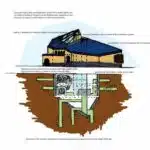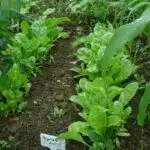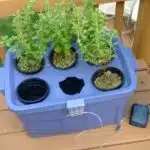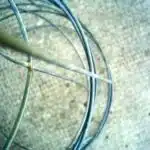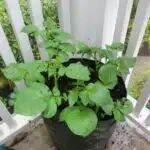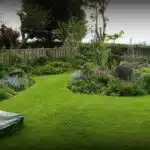Greenhouses offer an excellent way of extending the growing season for plants and vegetables, enabling gardeners to cultivate a variety of crops all year round. With so many different sizes, shapes, and styles available on the market today, choosing the right greenhouse can seem like a daunting task. However, with careful consideration of several factors, selecting a suitable greenhouse can be a straightforward process that guarantees maximum benefits.
As a greenhouse gardening expert with years of experience in cultivating plants in controlled environments, I understand the importance of selecting the right structure for your needs. In this article, we will explore various aspects that you should consider when choosing a greenhouse. Whether you are looking to grow exotic flowers or fresh produce for your family’s consumption, this guide will provide insights to help you make an informed decision about picking out the perfect greenhouse for your needs.
Consider Your Needs And Goals
When it comes to picking out a greenhouse, it’s important to consider your needs and goals. Before making any purchases, you should start by determining the main purpose of your greenhouse. Are you growing produce for personal use or for commercial purposes? This will help you decide on the size of the greenhouse that you need.
One of the most important factors to consider is your budget. It’s easy to get carried away when shopping for a greenhouse and overspend on unnecessary features. Be sure to set a budget and stick to it. You can also save money by building your own greenhouse from scratch using materials like PVC pipes, wood, or metal frames.
Goal setting strategies can also play a big part in deciding what type of greenhouse is best for you. If your goal is to grow plants year-round, then investing in a heated greenhouse may be necessary. Alternatively, if your goal is simply to extend the growing season for certain crops, then an unheated hoop house may suffice. By understanding your goals and needs before beginning your search, you’ll be better equipped to make an informed decision about which greenhouse is right for you.
With these budgeting tips and goal-setting strategies in mind, it’s time to determine the size of your greenhouse.
Determine The Size Of Your Greenhouse
Accurately measuring the space available for the greenhouse is a critical step for selecting the right size. The desired use of the greenhouse will also be a major factor in determining the ideal size. Having a clear budget in mind is also important when selecting a greenhouse of the appropriate size. Consideration should be taken for the number of plants to be grown and any desired features that may require additional space. Additionally, the type of plants being grown may determine the size of the greenhouse needed for optimal growing conditions. When determining the size of a greenhouse, it is important to consider all these factors to make the best decision.
Measuring The Space
When determining the size of your greenhouse, it is crucial to accurately measure the available space. Measuring accuracy is important because even slight inaccuracies could lead to a small greenhouse that cannot accommodate all your plants or an oversized one that takes up too much space. Therefore, use a tape measure or a laser measurer for precision.
Space optimization is another critical factor to consider when measuring the space for your greenhouse. You should ensure you have enough room not only for the greenhouse structure but also for pathways and working areas within it. Additionally, think about where you will place the entrance and any windows or vents to maximize airflow and light exposure for your plants.
Remember, measuring your space accurately and optimizing it can go a long way in ensuring that you choose the right size of greenhouse that fits perfectly into your garden while still meeting all of your requirements. So take time to measure carefully before selecting a greenhouse model to make certain you get the best possible results from your gardening efforts.
Desired Use
One crucial factor to consider when determining the size of your greenhouse is your desired use. Different types of plants require different environments, so it’s essential to determine what you want to grow before selecting a greenhouse model. If you plan to grow tall plants such as tomatoes or cucumbers, you will need a greenhouse with enough headspace to accommodate their growth. On the other hand, if you plan to grow smaller plants such as herbs and flowers, a smaller greenhouse may suffice.
Budget constraints should also be taken into account when considering the desired use of your greenhouse. Larger greenhouses can be more expensive, not only in terms of initial investment but also maintenance costs over time. Consider how much you are willing and able to spend on your greenhouse before making any final decisions on its size.
Ultimately, choosing the right size for your greenhouse depends on both practical considerations and personal preferences. By carefully considering how you plan to use your greenhouse and taking budget constraints into account, you can make an informed decision that meets all of your needs while still fitting within the available space and resources.
Budget Considerations
Determining the size of your greenhouse is a crucial aspect of planning for successful gardening. Apart from considering the types of plants you want to grow, budget constraints should also be taken into account. As a greenhouse gardening expert, I recommend evaluating all options before making any final decisions.
Firstly, consider whether you want to purchase a used or new greenhouse. While used greenhouses may be more affordable, they may require more maintenance and repairs in the long run. On the other hand, investing in a new one could lead to fewer expenses on upkeep. Secondly, think about whether you want to build your own DIY greenhouse or hire professionals to do it for you. While building a DIY greenhouse may seem like an affordable option, it can quickly add up if mistakes are made along the way.
Finally, take into account the ongoing costs of maintaining and operating your greenhouse. Larger greenhouses will naturally have higher maintenance costs due to their size and complexity. Regular upkeep such as cleaning and replacing parts can quickly add up over time if not considered in advance. By carefully considering all budgetary factors, you can make informed decisions that meet your needs while still fitting within available resources. Remember that investing in a high-quality greenhouse upfront can save money in the long run by reducing maintenance and repair costs down the line.
Choose The Right Material
Determining the size and material of your greenhouse is just the beginning. The next step is to choose the right shape and style that will suit your gardening needs. Greenhouses come in various shapes and styles, each with its own pros and cons.
One popular style is the lean-to greenhouse, which is attached to an existing building or wall. This type of greenhouse allows for easy access to utilities such as electricity and water. However, it requires a specific environment with ample sunlight exposure throughout the day.
Another common style is the freestanding greenhouse, which can be placed anywhere on your property as long as it meets zoning requirements. This option provides more flexibility in terms of location but may require additional costs for utilities and foundation construction.
Deciding on the ideal environment for your plants will help determine which shape and style is best suited for your needs. Consider factors such as sunlight exposure, wind patterns, temperature control, and ventilation when making your decision. With careful consideration, selecting the perfect greenhouse will allow you to create a thriving garden all year round.
Transitioning into the subsequent section about ‘decide on the shape and style’, it’s important to remember that this step should not be taken lightly. The shape and style of your greenhouse play a significant role in providing an optimal growing environment for your plants. In the next section, we’ll explore different options available in terms of shape and style so that you can make an informed decision based on what suits your gardening needs best.
Decide On The Shape And Style
Imagine walking into a furniture store with the goal of purchasing a new sofa. You are immediately struck by the sheer variety of shapes, styles, and colors available. So too is it when choosing a greenhouse for your gardening needs. The shape of your greenhouse is an important consideration as it can impact the amount of sunlight that reaches your plants, as well as how easy it is to maintain.
When deciding on the shape of your greenhouse, there are several options to choose from. One option is a traditional rectangular shape which offers plenty of space and allows for easy installation of benches and shelving units. Another option is a circular or dome-shaped structure which can provide better air circulation and reduce heat loss through the walls. A third option is a Gothic arch or A-frame design which provides increased headroom and greater stability in windy conditions.
In addition to considering the practical implications of shape, it’s also important to think about aesthetics. Your greenhouse should be an attractive addition to your garden or backyard, so choose a style that complements your existing landscaping and architecture. Consider factors such as color, materials used in construction, and any decorative elements you might want to add such as finials or ornamental brackets.
- Consider the amount of space you have available in your garden or backyard before selecting a shape.
- Think about how much sunlight you want to reach your plants when choosing between different shapes.
- Choose a style that complements the existing architecture and landscaping in your outdoor space.
- Take into account any specific needs you may have such as high wind resistance or ample headroom for tall plants.
As you weigh these considerations regarding shape and style options for your greenhouse, keep in mind that these choices will ultimately impact not only the productivity of your garden but also its appearance. Next up, we’ll discuss how assessing climate and weather conditions can further inform your choice for selecting the right greenhouse for you.
Assess Your Climate And Weather Conditions
Having decided on the shape and style of your greenhouse, the next step is to assess your climate and weather conditions. This is a crucial factor in determining the type of greenhouse that will be suitable for your needs. Greenhouse placement is also essential in ensuring optimal plant growth, as it affects the amount of sunlight and heat that your plants receive.
When evaluating climate conditions, consider factors such as temperature fluctuations, humidity levels, and wind patterns. If you live in an area with extreme temperatures or harsh weather conditions, you may need to invest in a greenhouse with advanced climate control features. These can include ventilation systems, heaters, and cooling units that regulate temperature and humidity levels.
Greenhouse placement is another important consideration when choosing a greenhouse. Ideally, you should choose an area that receives full sunlight for at least six hours a day. Ensure that there are no tall trees or buildings nearby that could cast shadows over your greenhouse during the day. Additionally, make sure that the location has easy access to water and electricity sources for proper maintenance.
As you evaluate your available space and location for your greenhouse, keep in mind any zoning regulations or permits required in your area. It’s also important to consider how much space you have available for the greenhouse itself as well as any accompanying equipment such as shelving or work tables. By taking these factors into account when selecting a greenhouse, you can ensure optimal plant growth and success in your gardening endeavors.
Evaluate Your Available Space And Location
When it comes to picking out a greenhouse, evaluating your available space and location is crucial. Choosing the perfect location for your greenhouse can make all the difference in how well your plants grow. Start by finding a spot that gets plenty of sunlight throughout the day, ideally at least six hours of direct sunlight. Avoid areas that are shaded or blocked by buildings or trees. If possible, choose a spot with good drainage to prevent water buildup around your greenhouse.
If you have limited space for your greenhouse, there are still ways to maximize what you have. Consider using vertical gardening techniques to save on horizontal space. Hanging baskets and shelves can also be used to hold more plants without taking up valuable floor space. Another option is to use smaller containers for your plants, which allows you to fit more into a smaller area.
Tips for maximizing small spaces also include choosing a smaller greenhouse model that fits within your available area. Lean-to greenhouses can be an excellent option if you have limited space against a wall or fence. Portable greenhouses are another option that provides flexibility in placement and size. Remember that even small greenhouses can yield impressive results when properly maintained and cared for.
In evaluating your available space and location, remember to consider both the size of your area and the amount of sunlight it receives. By choosing an appropriate location and maximizing small spaces, you’ll be able to create an ideal environment for growing healthy plants in your new greenhouse. Next, we will discuss how to determine your budget so that you can select the best greenhouse model for your needs.
Determine Your Budget
As you embark on the journey of selecting a greenhouse, it’s essential to set a budget that will guide your decision-making process. A budget serves as a financial compass and ensures that you don’t overspend or underspend. Think of it as a map that helps you navigate through the vast terrain of greenhouse options available in the market.
Factors to consider when determining your budget include the size, material, and features of the greenhouse. A larger greenhouse will cost more than a smaller one, while glass greenhouses are generally more expensive than plastic ones. Additionally, features such as ventilation systems, heating systems, and automated watering systems can increase the cost significantly. By setting a budget beforehand, you can narrow down your options and focus on finding a greenhouse that fits within your financial constraints.
Setting a budget also has several benefits beyond just financial planning. It forces you to evaluate your needs and priorities and make decisions accordingly. Moreover, it helps you avoid impulse purchases or feeling overwhelmed with choices. Ultimately, setting a budget allows you to make an informed decision that aligns with your gardening goals and resources.
As you begin research different brands and manufacturers for your greenhouse purchase, keep in mind that having a predetermined budget will help streamline your search process. By knowing what price range you’re comfortable with, you can easily weed out any options that fall outside of it. So take some time to evaluate how much money you’re willing to spend before diving into the exciting world of greenhouse gardening!
Research Different Brands And Manufacturers
When researching different brands and manufacturers of greenhouses, there are several essential factors to consider. First, compare prices of the available options in the market and determine which one fits your budget. Keep in mind that a higher price doesn’t always equate to better quality or features. Therefore, it is essential to balance your budget with your needs.
Secondly, take some time to read customer reviews about the brands you’re considering. Reviews can provide valuable insight into the experiences of other gardeners who have used these products before. Look for reviews that mention durability, ease of use, and overall satisfaction with the greenhouse’s performance. This information can be used to make an informed decision on which brand or manufacturer to choose.
Lastly, consider the reputation of the brand or manufacturer when making your decision. A reputable brand will often ensure higher quality materials and construction methods are used in their products. Additionally, they may offer better warranties or customer service if any issues arise with your greenhouse over time. By taking these factors into account, you can be confident that you’re selecting a reliable and high-quality greenhouse that will meet your gardening needs for years to come.
- You’ll feel relieved knowing you made a well-informed purchase.
- You’ll enjoy gardening more because of the superior quality of your greenhouse.
- You’ll feel proud showing off your beautiful plants and flowers to friends and family.
When it comes to purchasing a greenhouse, there’s more than just finding one that looks nice or fits within your budget. It’s essential to take the time to research different brands and manufacturers thoroughly. In doing so, you can make an informed decision based on factors such as price, customer reviews, and reputation. In the next section, we’ll discuss how checking for quality and durability is crucial when selecting a greenhouse that will last for many growing seasons ahead.
Check For Quality And Durability
When it comes to purchasing a greenhouse, quality and durability should be at the top of your list. As the saying goes, “you get what you pay for,” and this is especially true when it comes to gardening structures. A well-built greenhouse will not only last longer but will also require less maintenance over time.
To ensure that your greenhouse is of high quality, there are a few things to look out for. Firstly, check the materials that have been used in construction. A sturdy frame made from materials such as aluminum or galvanized steel will ensure that your greenhouse can withstand harsh weather conditions. Secondly, consider the type of cover that you choose for your greenhouse. Investing in a high-quality cover will protect your plants from extreme temperatures and pests while also lasting longer than cheaper alternatives.
Greenhouse maintenance is an important aspect of ensuring longevity and durability. To keep your structure in good condition, regularly clean any debris or dirt buildup around the base and gutters. Additionally, inspect the frame for any signs of rust or damage and replace broken parts as needed. By taking care of your greenhouse regularly, you can extend its lifespan and get the most out of your investment.
Moving forward, in order to make the most out of your greenhouse purchase, it’s important to look for features and accessories that fit your needs as a gardener. From ventilation systems to shelving units, various accessories can help you optimize plant growth while making maintenance easier. In the next section, we’ll explore some key features to consider when selecting a greenhouse that suits both your gardening style and budget.
Look For Features And Accessories
When looking for a greenhouse, it is important to consider the features and accessories that will best suit your needs. There are many options available on the market, so it can be overwhelming to decide which ones are necessary and which ones are not. However, by taking into account your specific gardening goals, you can narrow down the list of features and accessories that would be most beneficial.
One important feature to look for in a greenhouse is sustainability. A sustainable greenhouse will help reduce your overall carbon footprint while also providing a healthy environment for your plants. Look for features such as energy-efficient heating and cooling systems, solar panels for power, and rainwater collection systems. All of these features will not only benefit the environment but also save you money in the long run.
Greenhouse accessories can also greatly enhance your gardening experience. Some popular accessories include automatic watering systems, shelving units, ventilation fans, and pest control measures. These accessories can help make gardening easier and more efficient while also ensuring that your plants are healthy and thriving. When considering which accessories to purchase, think about what tasks you find most challenging or time-consuming in your current gardening routine.
When choosing a greenhouse, it is important to keep in mind both sustainable features and helpful accessories. By considering these factors along with other personal preferences such as size and style, you can find the perfect greenhouse to fit your gardening needs.
- Consider purchasing an automatic watering system to save time and ensure proper hydration for your plants.
- Look into shelving units to optimize space usage within your greenhouse.
- Invest in quality ventilation fans to regulate temperature and prevent plant diseases.
- Consider using natural pest control methods instead of harmful chemicals.
Consider Your Level Of Expertise
Assessing your level of expertise is an important consideration when choosing a greenhouse. Greenhouse gardening requires knowledge and skills that may not be immediately intuitive to beginners. As such, it’s important to assess your level of expertise before selecting a greenhouse.
To do this, consider your prior experience with gardening or horticulture. If you have no prior experience, consider taking training and education options to increase your knowledge and skills. This will help you better understand the requirements for maintaining a healthy greenhouse environment.
Training and education options can include online courses, community college classes, or local gardening clubs. Additionally, many greenhouse manufacturers offer resources and support for growers of all levels. By investing in your knowledge and skills, you’ll be better equipped to select a greenhouse that meets your needs and achieve greater success in your gardening endeavors.
With an assessment of your expertise level completed and any necessary education or training under your belt, you’re now ready to begin planning for installation and maintenance of your new greenhouse.
Plan For Installation And Maintenance
- Accurate location of the greenhouse is essential for successful growth of plants, and should be considered before a purchase is made.
- It is important to choose a location that receives optimal sunlight, has good drainage, and is close to a water source.
- The foundation of the greenhouse should be solid and level, allowing for better insulation and stability.
- Ventilation is an important factor to consider when purchasing a greenhouse, as it helps regulate temperature and humidity levels.
- Automated systems are available for controlling ventilation, which can be beneficial for larger greenhouses.
- Manual ventilation systems can be installed for smaller greenhouses, however, these require frequent monitoring and maintenance.
Location
Selecting the right location for a greenhouse is one of the most crucial decisions that gardeners have to make. Several factors should be considered when choosing the perfect spot for a greenhouse. One of the pros of selecting an appropriate location is that it can help ensure optimal growing conditions for plants and increase their yield. On the other hand, failing to choose an ideal site can lead to poor plant growth, which could negatively affect the gardener’s investment.
When deciding on a location, there are several best practices that gardeners should apply. For instance, they should consider placing their greenhouse in an area with maximum exposure to sunlight. This will ensure that plants receive ample amounts of light, which will aid in photosynthesis and enhance their overall growth. Additionally, they should factor in wind speed and direction when choosing a site as strong winds could damage or even uproot the greenhouse.
Despite these advantages, there are also cons associated with selecting certain locations for greenhouses. For example, building a greenhouse on sloping terrain may require additional construction work to level the ground adequately. Moreover, installing a greenhouse close to trees or buildings may limit access to sunlight or cause shading issues for plants grown inside. Therefore, gardeners must weigh both sides before settling on a particular location and take into account any potential challenges that may arise from their choice of site.
Foundation
When it comes to installing a greenhouse, one crucial aspect that gardeners must consider is the foundation. A sturdy and level foundation sets the stage for a successful greenhouse growing experience. There are two main types of foundations to choose from: concrete and gravel. Concrete foundations are more permanent and provide excellent support for heavier greenhouse structures, while gravel foundations offer better drainage and can be easier to install.
Regardless of the type of foundation chosen, leveling techniques should be employed to ensure that the foundation is even and stable. This prevents issues such as water pooling or structural damage caused by uneven weight distribution. Techniques such as using a builder’s level or digging trenches can help achieve an even foundation for the greenhouse structure.
It’s important to note that proper installation of the greenhouse foundation is not only necessary for optimal plant growth but also for safety reasons. A poorly installed foundation can lead to structural damage or even collapse in extreme weather conditions. Therefore, gardeners should take their time in planning and executing their foundation installation to ensure long-term success for their greenhouse project.
Ventilation
Proper planning and execution of greenhouse installation and maintenance are vital for optimal plant growth. While a sturdy foundation is necessary to support the structure, proper ventilation is equally important to ensure healthy plants. Ventilation plays a crucial role in regulating temperature, humidity levels, and air circulation inside the greenhouse.
The importance of ventilation cannot be overstated as it affects plant development, disease prevention, and pest control. There are two types of ventilation systems: natural and mechanical. Natural ventilation relies on passive methods such as vents, windows, or louvers to allow air exchange between the inside and outside of the greenhouse. Mechanical ventilation uses fans or blowers to circulate air inside the greenhouse actively.
Natural ventilation systems are cost-effective and environmentally friendly while mechanical systems offer more precise control over temperature and humidity levels. Regardless of which system is chosen, proper placement of vents or fans is vital to ensure adequate air flow throughout the greenhouse space.
In summary, proper implementation of both foundation and ventilation systems is crucial for successful greenhouse gardening. A sturdy foundation provides structural support while proper ventilation ensures healthy plant growth by regulating temperature, humidity levels, air circulation, disease prevention, and pest control. Gardeners should carefully consider their options when selecting which type of ventilation system best suits their needs based on cost-effectiveness, environmental impact, and overall control over air quality within the greenhouse space.
Seek Professional Advice And Assistance
Benefits of consulting with a greenhouse gardening expert cannot be overstated when it comes to picking out a greenhouse. Experts have extensive knowledge and experience in selecting the right type of greenhouse that fits your needs and requirements. They can offer advice on the size, location, and materials used in constructing the greenhouse. Furthermore, they will provide valuable information on how to maintain the ideal growing environment within your greenhouse.
Common mistakes to avoid when picking out a greenhouse include selecting one that is too small or too large. Additionally, some people choose greenhouses that are not suited for their climate or growing conditions. This can result in suboptimal plant growth and poor performance of the greenhouse itself. By consulting with an expert, you can avoid these costly mistakes and ensure that you select a greenhouse that will meet all your needs.
In summary, seeking professional advice and assistance from a greenhouse gardening expert is crucial when picking out a greenhouse. Not only will they provide invaluable knowledge on selecting the right type of greenhouse for your needs, but they will also help you avoid common mistakes that many people make. With their guidance, you can rest assured that you are making an informed decision about investing in a high-quality greenhouse that will serve you for years to come.
Read Reviews And Testimonials
Reading reviews is an important step in the process of selecting a greenhouse, as it allows the potential buyer to gain insight from past customers. It is important to pay attention to the number of reviews, as well as the average rating in order to get an accurate picture of the product. Testimonials should also be taken into account, as they provide a more detailed account of the customer’s experience. It is also wise to consider the source of the testimonial, as it could be a biased review.
Reading Reviews
When it comes to picking out a greenhouse, reading reviews can be a valuable tool in making an informed decision. However, it is important to keep in mind the importance of authenticity and avoiding biased reviews. As a greenhouse gardening expert, I recommend looking for reviews from verified purchasers or users who have actually used the product.
Authenticity should be a top priority when reading reviews. Unfortunately, there are many fake reviews online that are created by individuals with ulterior motives. These dishonest reviewers may be looking to promote their own product or discredit a competitor’s product. To avoid falling prey to these fake reviews, look for ones that provide detailed information about the product and its performance.
In addition to authenticity, it is also crucial to avoid biased reviews. Some reviewers may have received the product for free or at a discount in exchange for their review, which can influence their opinion and skew their evaluation of the product. When considering these types of reviews, take them with a grain of salt and compare them with other unbiased reviews to get a more well-rounded perspective on the product.
Testing Testimonials
As a greenhouse gardening expert, it is essential to consider not only the authenticity of reviews but also the impact of social proof when selecting a greenhouse. Social proof refers to the idea that people are more likely to make a purchase if they see that others have already done so and had positive experiences. Testimonials provide social proof, and they can be helpful in guiding your decision when choosing a greenhouse.
However, it is crucial to test these testimonials before making a final decision. While testimonials can be powerful tools in influencing our choices, they may not always be authentic. It is common for companies to post fake testimonials on their websites or other platforms to promote their products falsely. As such, it’s important to verify the source and credibility of these reviews by checking if the reviewer has actually purchased or used the product.
One way to test testimonials’ authenticity is by reaching out to previous clients who have provided feedback about the greenhouse you’re interested in purchasing. You can ask them specific questions about their experience with the product and how well it performed over time. This will give you a better understanding of whether or not the greenhouse is worth purchasing based on real feedback from actual users. Testing testimonials ensures that you are making an informed decision based on authentic reviews rather than biased or fake ones.
Make An Informed Decision And Purchase
As you navigate through the vast array of greenhouse options available, it can be overwhelming to determine which one is the best fit for your needs. However, much like a gardener carefully selects their seeds, you too must carefully select your greenhouse. Consider the metaphorical comparison between selecting a greenhouse and planting seeds – just as each seed requires different conditions to grow, each greenhouse will offer unique benefits and drawbacks.
One of the most important factors to consider when selecting a greenhouse is cost vs. quality. While it may be tempting to opt for a lower-priced option, it’s important to remember that investing in a high-quality greenhouse can save you money in the long run. Cheaper greenhouses may not be built with durable materials or may lack proper ventilation systems, which could lead to costly repairs down the line. In contrast, investing in a quality greenhouse made of sturdy materials and equipped with proper ventilation can provide you with a reliable and long-lasting growing environment.
Another factor to consider when selecting a greenhouse is benefits vs. drawbacks. Each type of greenhouse will offer its own set of advantages and disadvantages. For example, a traditional glass-paneled greenhouse may provide maximum sunlight exposure but also require more maintenance than other types of greenhouses such as polycarbonate or hoop houses. On the other hand, while polycarbonate greenhouses are easier to maintain and less expensive than glass-panel options, they may not provide as much insulation during colder months.
When choosing a greenhouse, it’s important to weigh all factors carefully before making your final decision. Keep in mind that cost should not be the only determining factor – investing in a high-quality greenhouse can ultimately save you money in the long run by providing you with an environment that promotes healthy plant growth while minimizing repair costs. Additionally, weighing the benefits and drawbacks of each type of greenhouse will help ensure that you select an option that meets your specific needs and preferences.
Conclusion
When it comes to selecting a greenhouse, there are several factors to consider. It is important to assess your needs and goals, determine the appropriate size, choose the right material, decide on the shape and style, evaluate your climate and weather conditions, plan for installation and maintenance, seek professional advice and assistance, and read reviews and testimonials. By carefully considering each of these factors, you can make an informed decision that will help you achieve your gardening objectives.
One question that often arises when choosing a greenhouse is whether to go with a traditional design or opt for a more contemporary style. While there are advantages to both approaches, ultimately the choice depends on your personal preferences as well as your specific gardening needs. Whatever style you choose, remember that a greenhouse is an investment in your gardening future – one that will pay dividends in terms of increased yields and greater enjoyment of your favorite pastime. So take the time to do your research, consult with experts if necessary, and make a decision that reflects both your practical requirements and aesthetic sensibilities.
Image Credits
- “Greenhouse” by roanokecollege (featured)

